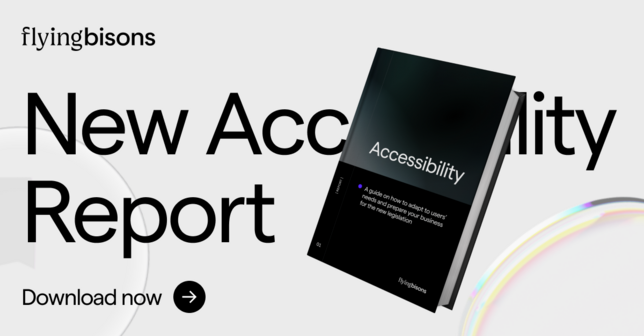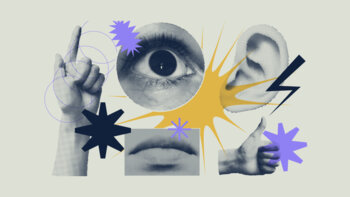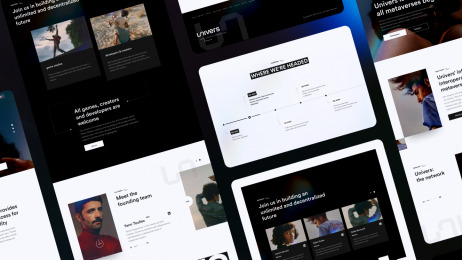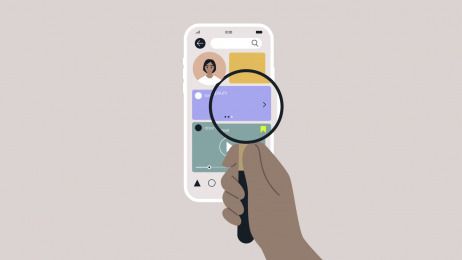
Kamil Tatol
-
Jan 17, 2023
-
4 min read
Good design starts with empathy. Developed societies are ageing, and the speed and way of life influence the development of many new disabilities. The sooner we understand how inclusive solutions help everyone, not just a selected minority, the sooner we will all benefit from it. Read more about web accessibility and download a free accessibility report!
Both customers and businesses will benefit from the standard accessibility requirements.
What is WCAG?
Web Content Accessibility Guidelines, abbreviated as WCAG 2.0, is a document published by the World Wide Web Consortium (W3C). Long story short – WCAG 2.0 provides recommendations for making digital content more accessible. But what does it mean?
Why is digital accessibility so important?
Without accessibility, we cannot speak of equal treatment for all users of digital products. It is crucial to create a fair and inclusive world – for everybody.
Accessibility is the essence of equality.
Up to 15% of users have some disability
15% of the world's population has some form of disability – which makes it the largest minority group in the world.
Even more than 1 billion people have some form of disability. A cross-section of these health problems may include long-term sensory, mental, intellectual, or physical impairments. It is closely related to health care and support needs and obviously – has a significant impact on people's day-to-day lives.
Nor can we doubt that the incidence of disability is bound to increase significantly in the coming decades as the global population ages.
More than 1 billion people worldwide have some form of visual impairment, including 41 million people who are blind. There are already more than 1.5 billion people worldwide living with hearing loss. And by 2050, this number could rise to more than 2.5 billion.
In countries where life expectancy is over 70 years, an average of 8 years is spent with a disability.
But wait… it is not only about disabilities
Accessible digital products are easier and better to use for everyone – not just people with disabilities. Accessibility is not an obstacle to overcome in the design process. It is more of an opportunity to create a better product for all users.
— Steve Ballmer
Good product design is supposed to bring people together, not divide them based on strengths and weaknesses. Many projects were considered to help people with disabilities – and ended up making everyone’s life easier.
Money talks – inaccessible products make less money
Most businesses cannot afford to overlook the needs and spending habits of consumers with disabilities.
If the arguments presented are not enough – including digital accessibility help increase market reach, profitability and positive brand image.
Accessibility isn’t expensive. Actually – it can result in a significant increase in profits. Accessible products add an additional multitude of people to your potential market. It also optimizes workflow by accounting for more issues beforehand. And the last but not least point – the cost of non-compliance can be much higher than that of WCAG compliance.
The number of lawsuits brought against unprepared companies increases each year
In some countries, in addition to ethical and commercial justifications for implementing WCAG, there are also legal reasons. In European Union directive requires public sector bodies' websites and mobile apps to be WCAG 2.1 level AA compliant. Under UK law, if a company's website is not accessible, the website owner can be sued for discrimination. In 2017, the US Access Board approved a final rule, adopting seventeen WCAG 2.0 success criteria. 22 of the 38 existing A- and AA-level criteria were already covered by the existing guidelines. In the same year, Federal Court in Florida identified the WCAG guidelines as the "industry standard".
The number of web accessibility lawsuits continues to rise. To cite some spectacular examples, it is worth mentioning:
- The National Federation of the Blind (NFB), sued Target Corporation, a national retail chain, claiming that blind people were unable to access much information on the defendant's website or purchase anything from its website themselves.
- The National Association for the Deaf (NAD) filed a lawsuit against Netflix, the online giant. This was for exempting customers with hearing impairments or deafness from their online services. This concerned the exclusion of hearing-impaired or deaf users from their online services.
- In 2015, the National Association of the Deaf (NAD) alleged Harvard and MIT of violating U.S. accessibility laws by not providing appropriately accurate and comprehensive captioning for online course materials.
What are the four principles of WCAG?
The WCAG is based on four main principles. It states that content must be POUR, corresponding to: Perceivable, Operable, Understandable and Robust.
Perceivable
The user must be able to perceive the information presented (it can't be invisible to all of their senses).
Operable
The user must be able to operate the interface.
Understandable
The user must be able to understand the information and the operation of the user interface, which means that the content or process must not be beyond their comprehension.
Robust
The user must be able to access the content as the technology evolves.
If any of these are not met, users with disabilities may be unable to use them.
What are the three levels of WCAG
The WCAG also have three levels of conformance. Those levels are defined as progressively harder – A (the lowest), AA, and AAA (the highest). There are 25 criteria a product has to meet to reach Level A. To reach Level AA, it is 13 more criteria in addition to the 25 for Level A.
How to meet WCAG? Download our web accessibility report and take 13 steps for a better user experience
Accessible solutions work better for everyone. They are more straightforward, easier to navigate, and intuitive.Web Content Accessibility Guidelines 2.1 covers a wide range of recommendations. In the report we’ve prepared, you’ll find statistics on disability and accessibility, how different digital accessibility laws look around the world, and how applying WCAG standards can improve your SEO.
We also included WCAG’s 13 guidelines which set out the fundamental objectives that you should aim to achieve to make content more accessible. They provide a framework and general goals, which will help you understand success criteria and implement techniques.
Download our web accessibility report and remember: it’s worth knowing and applying WCAG – for the benefit of users, businesses, and us all.


What is WCAG, and why we should learn, understand and adopt it




















